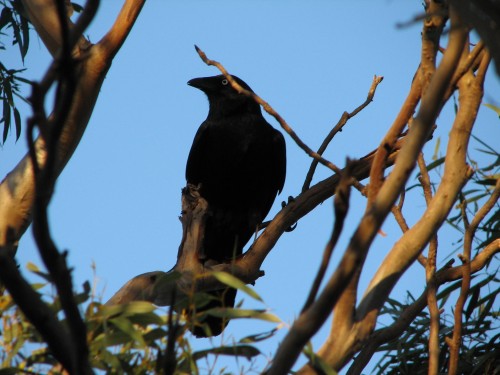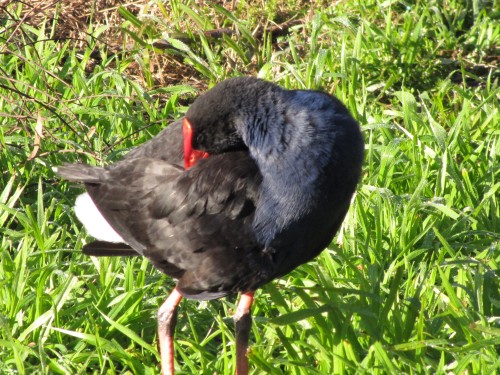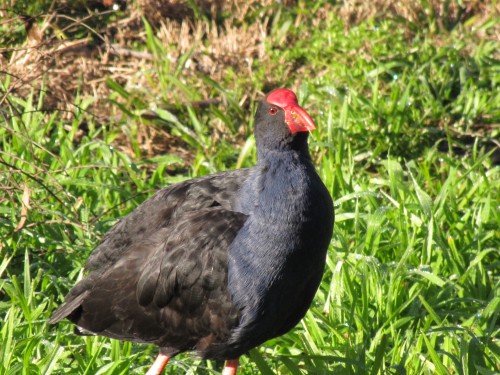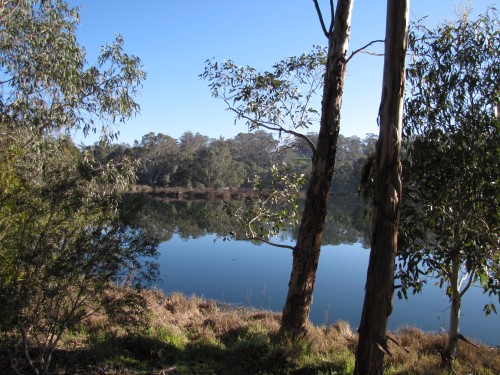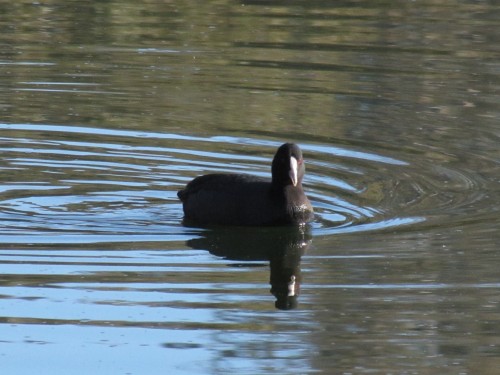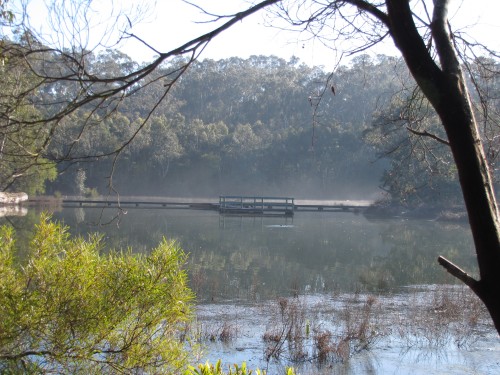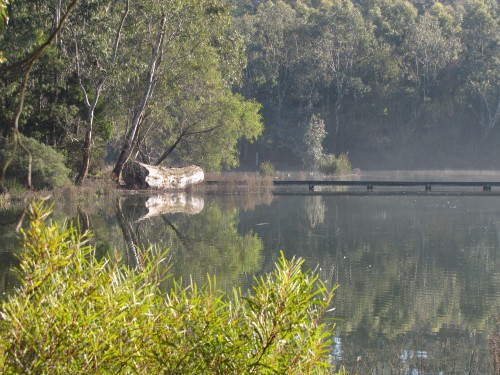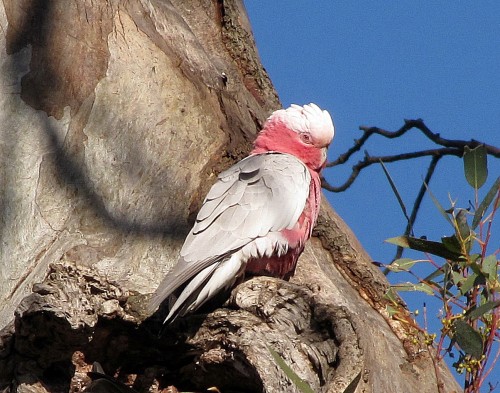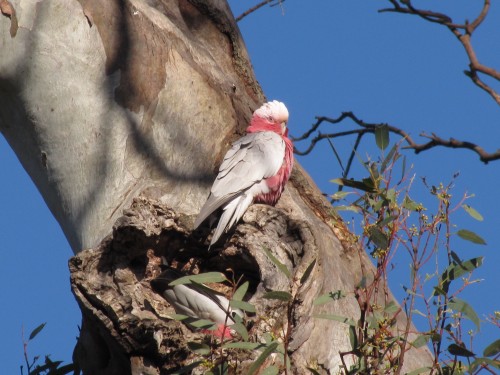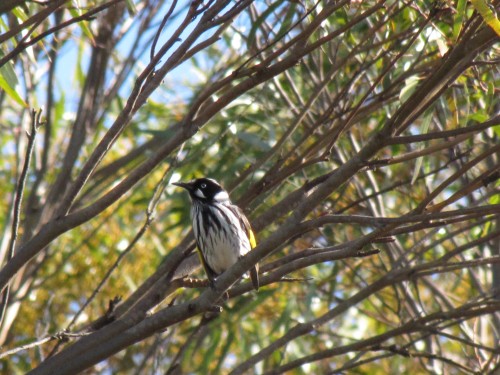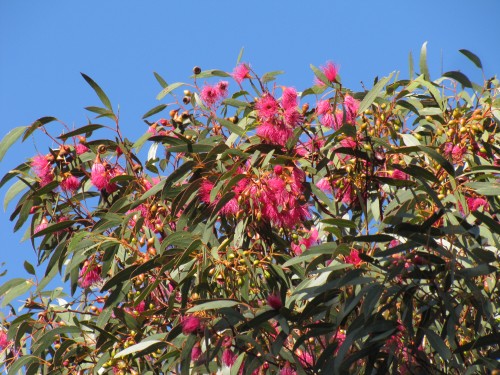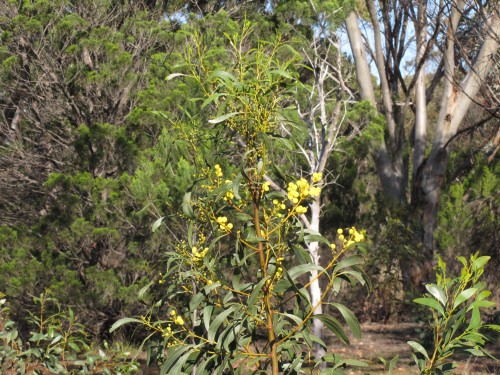Crows using tools
I have written before about how clever crows and ravens can be. This is a well established fact and people around the world have witnessed how intelligent the corvid family can be. In fact, if you do a search for videos of these birds using tools you will find many hundreds of them; I have provided a link below.
Earlier this week I witnessed first hand one of the Little Ravens in our garden actually using a tool to assist in finding food. It had picked up what looked like a flat rock and was progressively using it to prise bark off the trunk of a mallee tree near the house. Once the bark was lifted it dropped the stone and used its beak to grab whatever was hiding beneath the bark.
Spiders, beetles and a whole range of small creatures routinely live under the bark of the local trees. Several times the bird flew down to the ground to retrieve the stone in order to use it again for the same purpose. After about three or four little snacks it flew off, stone in its beak to another tree, this time out of sight.
Of course, I didn’t have my camera handy at the time. [Sigh]
Further reading:
- Clever crows – articles from my archives
- Corvids – links to more articles about crows and ravens
- Videos of crows using tools
- Little Ravens feeding their young
- A very clever crow
Birding at Browns Road Monarto
This afternoon my wife and I took a detour coming home from Mt Barker in the Adelaide Hills. We had been there for a appointment, after which we had a relaxing lunch in one of the local cafes. Instead of taking the South-Eastern Freeway home to Murray Bridge we took the old Princes Highway route. It is a longer, more circuitous route but far more interesting.
Just past Callington we turned off into Browns Road near Monarto. We stopped at a spot where we could park the car safely before going on a short walk through the scrub. The sign on the gate says “Monarto Woodlands” but local birders usually refer to this area as Browns Road.
The scrub here is a confusing mixture of plant species. While there are some species common to the surrounding region, many of the trees and shrubs are introduced from other parts of Australia. A quick glance shows many Western Australian species, for example. This has come about due to extensive planting back in the 1980s when this area was designated as a satellite city to Adelaide. While a large area of farming land was purchased by the then state government, and the city was planned, no building ever occurred and much of the land has been returned to productive agricultural use. The only exception has been the establishment nearby of Monarto Open Range Zoo, part of Adelaide Zoo (and well worth a visit too, I might add).
We didn’t have all that much time on our visit this afternoon and my back and hips were being quite a pain. In the few minutes we were there I managed to record the following species:
- White-winged Chough
- Singing Honeyeater
- Red wattlebird
- New Holland Honeyeater (pictured above)
- White-browed Babbler
- Peaceful Dove
- Crested Pigeon
- Grey Fantail
- Willie Wagtail
- Yellow Thornbill
- Spiny-cheeked Honeyeater
- Silvereye
- Grey Shrike-thrush
- Common Starling
- Adelaide Rosella
- Australian Magpie (white backed)
- Weebill
While this is not a great list it is not bad for about ten minutes of birding. In recent weeks many other South Australian birders have visited this area and have reported far more species. I must visit more often, seeing it is about a 20 minute drive from home.
Some of the plants flowering are shown in the photos below.
Further reading:
